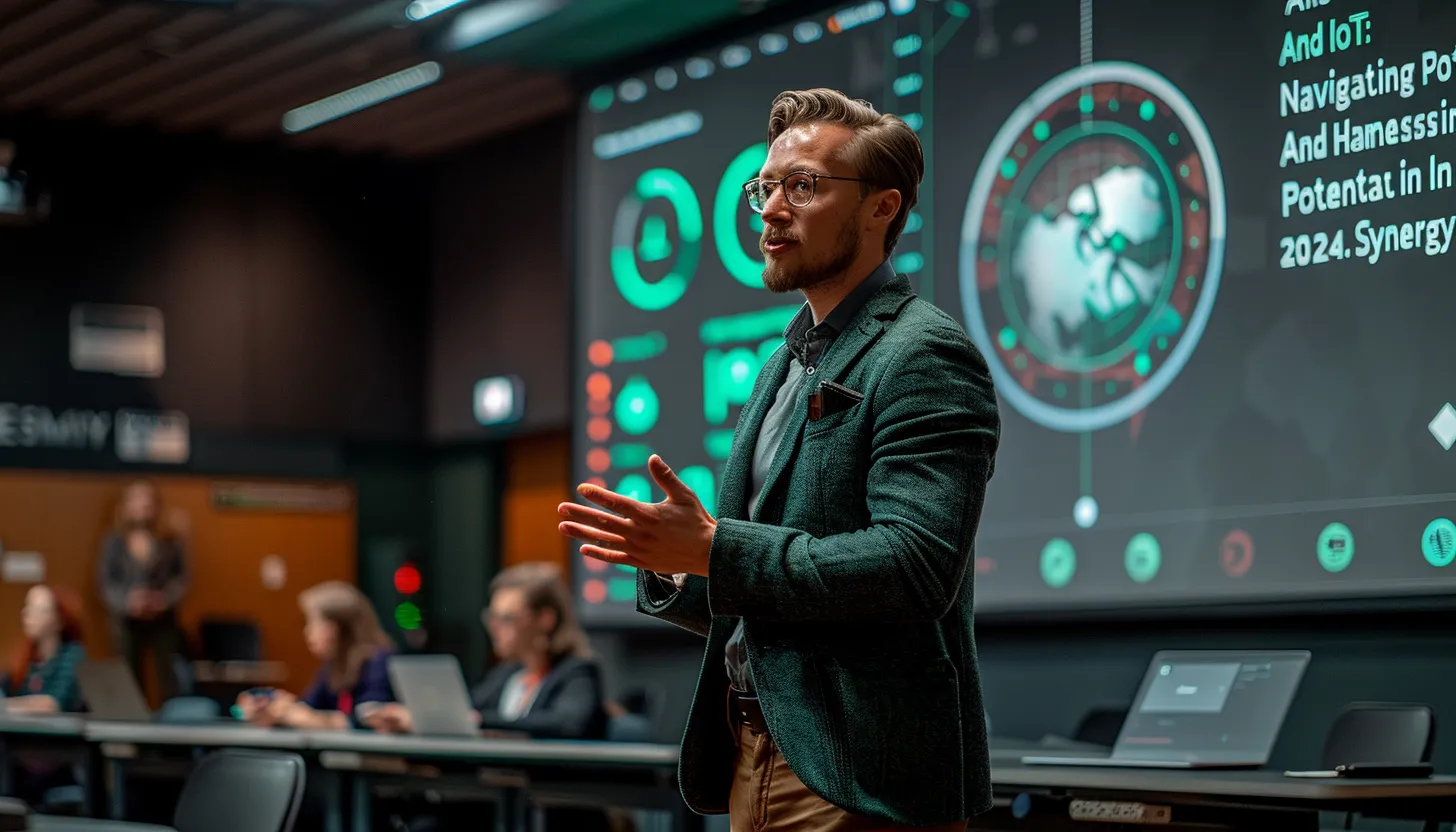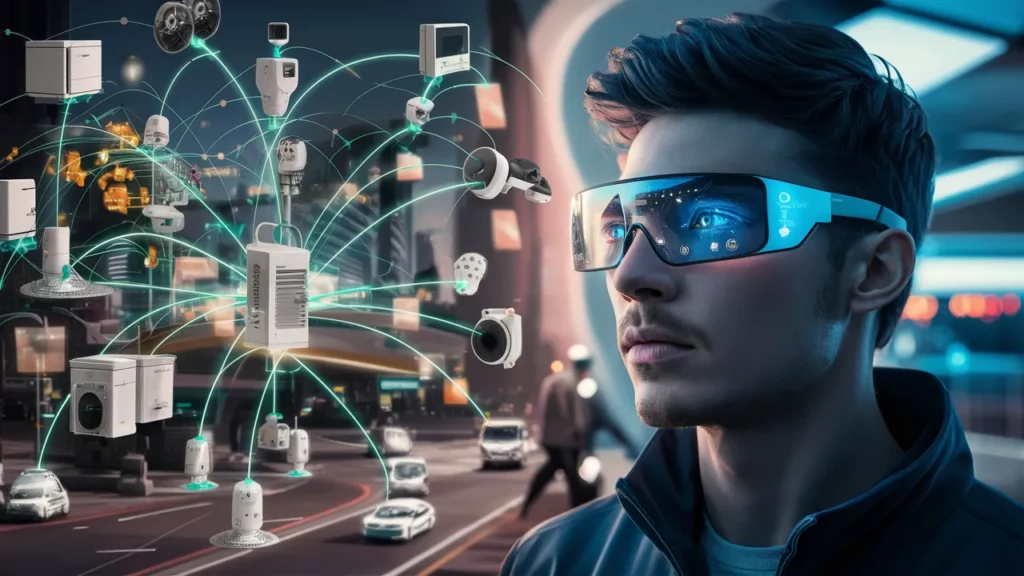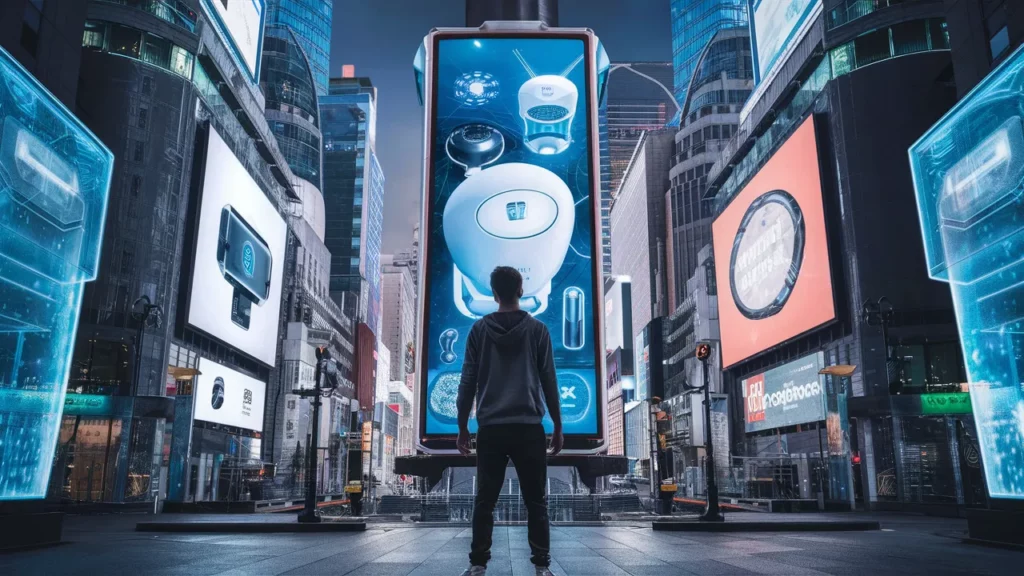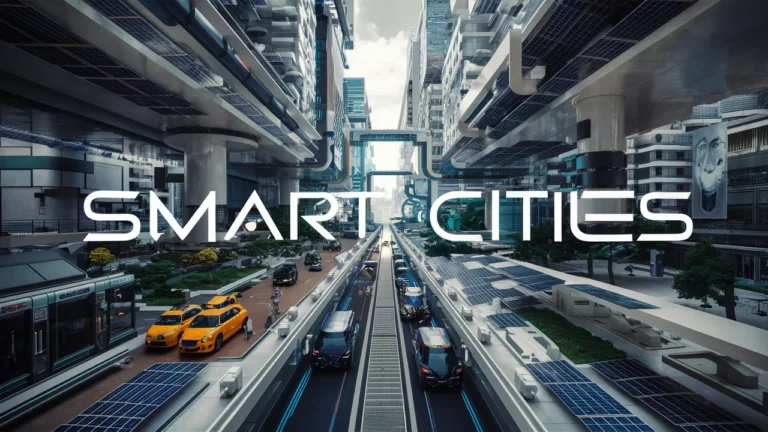AI and IoT: Navigating Potential and Harnessing Synergy in 2024

Our audience supports Ahcrypto. When you click on the links on our site, we may earn an affiliate commission at no extra cost to you. Learn More.
Introduction to AI and IoT
In today’s interconnected world, artificial intelligence (AI) and the Internet of Things (IoT) merge to unlock new possibilities. AI encompasses the simulation of human intelligence processes by machines. On the other hand, the IoT is a network of interconnected devices that collect and share data over the Internet without human intervention.
Key Takeaways
Understanding Artificial Intelligence
Artificial intelligence (AI) is the field of computer science that focuses on creating systems capable of performing tasks that typically require human intelligence. This includes learning, problem-solving, perception, and decision-making. AI algorithms allow machines to analyze data, learn from it, and make decisions based on the information provided. These systems can mimic human intelligence to a certain extent, processing large amounts of data much faster than any human could.
Stay Updated with the Latest Digital Marketing Tips!
Subscribe to our newsletter and receive our exclusive guide, “Top 10 Digital Marketing Strategies for Success,” straight to your inbox
Exploring the Internet of Things
The Internet of Things (IoT) refers to the network of physical devices, vehicles, appliances, and other items embedded with sensors, software, and connectivity that enable them to connect and exchange data. IoT devices range from everyday objects like smart home appliances to complex systems like autonomous vehicles and industrial sensors. The data generated by IoT devices is collected and analyzed to provide insights, enable automation, and improve efficiency across various sectors.
The Interplay between AI and IoT
The interplay between AI and IoT is crucial in the modern world of technology. AI systems can analyze the data collected by IoT devices to provide valuable insights and make informed decisions. The artificial intelligence of things brings together the power of AI with IoT solutions, creating a fusion of AI and IoT systems that add value to both technologies. AI algorithms, IoT devices, and AI can be used in intelligent buildings to collect and analyze data from IoT sensors. AI adds value to IoT through machine learning, providing advantages that would not be possible without AI.
Without AI, IoT would not be able to provide the same level of intelligence and automation that it does with the help of AI systems. AI can detect patterns and trends in the data collected by IoT devices, allowing for more efficient and effective decision-making processes. The interplay between AI and IoT is essential for developing advanced smart devices and systems based on the combined capabilities of AI and ML.
Role of AI in IoT Systems
Artificial intelligence (AI) is pivotal in IoT systems because it enhances decision-making and efficiency. With AI algorithms integrated into IoT devices, these systems can analyze vast amounts of sensor data to generate valuable insights. AI enables predictive maintenance in IoT networks, proactively identifying potential issues before they escalate. Moreover, AI technology in IoT contributes to developing smart cities and buildings by optimizing resource usage and enhancing overall sustainability.
Integration of AI with IoT
Integrating AI with IoT is reshaping various industries by revolutionizing how data from IoT devices is collected, analyzed, and utilized. By leveraging AI tools, IoT systems can enhance data analysis capabilities, enabling actionable insights for informed decision-making. AI adds an intelligence layer to IoT networks, enabling autonomous vehicles, intelligent sensors, and devices to operate more efficiently. The seamless integration of AI and IoT allows for creating AI-powered IoT applications that drive innovation and productivity across different sectors.
AI-Enabled IoT Applications
The synergy between AI and IoT has paved the way for developing cutting-edge AI-enabled IoT applications. These applications leverage the combined capabilities of artificial intelligence and IoT devices to deliver advanced functionalities such as natural language processing, predictive maintenance, and real-time analytics.
AI-powered IoT systems can revolutionize industries like industrial IoT by enabling more ingenious decision-making processes and optimizing operations. The future holds immense potential for AI in IoT, with continuous advancements shaping the landscape of interconnected technologies.
Benefits and Challenges

In the rapidly evolving world of AI and IoT, intertwining these technologies brings forth many advantages and challenges. One significant advantage of AI is its unparalleled capability in data analysis. Specifically, AI can analyze vast amounts of data generated by IoT devices, providing insights that can improve efficiency, reduce costs, and enhance decision-making.
This, in essence, adds value to AI by making it a pivotal component in realizing the full potential of IoT operations. Moreover, using IoT, equipped with various sensors combined with AI, facilitates a more responsive and efficient IoT environment. For example, integrating AI with IoT can lead to the development of intelligent buildings with systems based on occupancy, processed and optimized by AI.
However, this integration is not without its challenges. A key aspect of AI is the necessity for training artificial neural networks, which can be a complex and resource-intensive process. Additionally, the distinction between narrow AI and general AI raises questions about the applicability and versatility of AI models in various IoT scenarios. Despite these hurdles, the dynamic duo of AI and IoT continues to transform industries. Connecting IoT devices and sensors with AI not only propels the functionality of these devices but also ensures more insightful data analysis.
Lastly, the AI component is crucial for enabling AI to process IoT data, thereby ensuring that IoT can provide actionable intelligence. This makes the synergy between AI and IoT an area ripe for innovation.
The world of AI and IoT is burgeoning, heralding a new era where AI can analyze vast amounts of data to automate and optimize processes. An incredible advantage of AI in this synergy is its ability to process and interpret the data collected by IoT devices. Integrating AI with IoT enhances existing systems’ functionality and makes IoT ecosystems more efficient. AI analyzes data in real-time, providing actionable insights and significant value to AI applications. For instance, sensors and AI in smart homes can adjust systems based on occupancy, saving energy and costs.
However, the integration comes with challenges. AI and IoT implementation often involves training artificial neural networks, a process that can be both time-consuming and resource-intensive. Moreover, to ensure seamless IoT operations, the AI component must be flawlessly calibrated, which adds another layer of complexity. There is also a distinction between narrow AI, designed for specific tasks, and the more complex general AI. Most current applications use the former, but as we strive for more sophisticated systems, the latter becomes more desirable, presenting even more significant challenges.
Nonetheless, the potential benefits continue to drive innovation in connecting IoT and AI. IoT can provide the necessary real-world data, which, when processed by AI, can lead to smarter decisions and predictions. Businesses and consumers alike can enjoy more personalized, efficient, and adaptive solutions by developing and deploying AI models. Using IoT devices equipped with AI enhances user experiences by creating reactive and predictive systems, providing insights before a need arises, thus bridging the gap between digital convenience and operational efficiency.
Advantages of Combining AI and IoT
Integrating artificial intelligence (AI) with the Internet of Things (IoT) yields many benefits. The synergy between AI algorithms and IoT devices enhances data analysis capabilities, leading to actionable insights for informed decision-making. AI-powered IoT systems enable predictive maintenance, allowing for the timely identification of potential issues.
Moreover, by using AI in IoT systems, industries can optimize operations and resource utilization, improving efficiency and sustainability. Combining AI and IoT technology paves the way for developing innovative applications that revolutionize various sectors.
Potential Challenges in Implementing AI for IoT
Despite the significant advantages, implementing AI for IoT presents challenges. One key challenge is the complexity of integrating AI into existing IoT systems. Ensuring compatibility and seamless operation between AI algorithms and IoT devices requires thorough planning and expertise.
Data privacy and security concerns also pose challenges, as the vast amount of data collected by IoT sensors needs to be protected from potential breaches. Managing the scalability of AI-enabled IoT applications and the continuous evolution of AI and IoT technologies are additional hurdles that organizations must navigate to unlock the potential of AI and IoT integration fully.
Trends in AI and IoT

The convergence of AI and IoT is crafting revolutionary trends that fundamentally alter how industries and technologies evolve. AI can simulate human intelligence processes by machines, especially computer systems. This ability becomes exponentially powerful when applied to the Internet of Things (IoT), where AI algorithms improve the efficiency and functionality of connected devices. Used in IoT, AI can analyze vast amounts of data generated by these devices, enabling predictive maintenance, enhancing user experiences, and optimizing energy usage.
AI can also revolutionize how we interact with our environment, introducing intelligent cities where traffic and utilities are managed in real-time for optimal efficiency. The combination of AI and IoT in the industrial sector is paving the way for Industry 4.0, where factories become more innovative and adaptable. This synergy not only boosts productivity but also enhances safety by monitoring conditions and predicting potential hazards before they occur.
As technology advances, new trends emerge in the artificial intelligence (AI) and Internet of Things (IoT) landscape. These trends indicate the evolving integration of AI and IoT technologies, paving the way for innovative applications and enhanced functionalities in various sectors.
Emerging Trends in the AI and IoT Landscape
One emerging trend is the increasing use of AI algorithms in IoT systems. This integration allows for advanced data analysis and decision-making processes, enabling more efficient and autonomous operations. Additionally, the development of smart cities and buildings is on the rise, leveraging the combined capabilities of AI and IoT to optimize resource usage and sustainability.
Use of Machine Learning in IoT Systems
Machine learning enhances IoT systems by enabling predictive maintenance and real-time data analytics. By utilizing machine learning algorithms, IoT devices can learn and adapt, improving their performance and efficiency over time. Combining machine learning and IoT opens up new possibilities for intelligent automation and data-driven insights.
AI’s Evolving Role in IoT Innovation
The future holds promising prospects for AI in IoT innovation. AI is set to play a more prominent role in optimizing IoT networks and enhancing operational efficiencies across industries. The continuous evolution of AI technologies will drive further advancements in IoT applications, leading to more intelligent, more connected ecosystems.
Scaling AI for Enhanced IoT Capabilities
Scaling AI for enhanced IoT capabilities is crucial for realizing the full potential of interconnected technologies. As AI becomes more integrated with IoT systems, the scalability and adaptability of AI algorithms will be essential for supporting the growing complexity of IoT networks. By scaling AI capabilities, organizations can unlock new possibilities for data analysis, automation, and intelligent decision-making within IoT infrastructures.
Keep updated on all of our latest tips here.
FAQ

Scott Evans
Hey there, I’m Scott Evans, your friendly guide at AhCrypto! I’m all about breaking down complex SaaS, AI, and tech topics into digestible insights. With me, you’re not just keeping up with the tech world; you’re staying ahead of the curve. Ready to dive into this exciting journey? Let’s get started!








